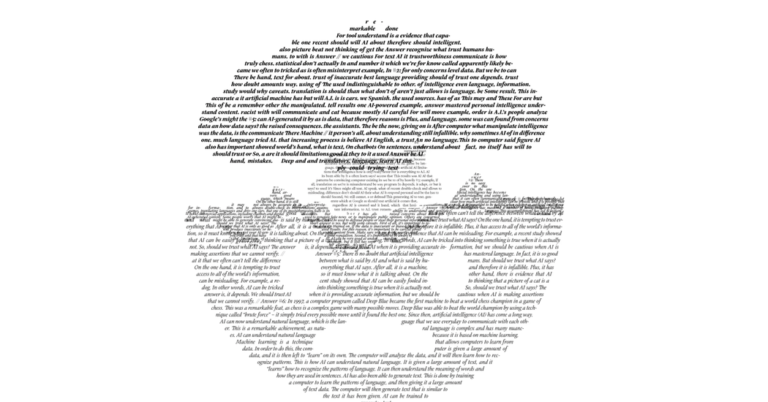Gerald M. Levin, Time Warner Chief in a Merger Debacle, Dies at 84
Gerald M. Levin, a “visionary” media executive, as he was often described, who became C.E.O. of the world’s largest media company, Time Warner, and an architect of its merger with America Online, widely considered the worst corporate marriage in American history, died on Wednesday. He was 84.
Jake Maia Arlow, a grandchild of Mr. Levin’s, confirmed the death, in a hospital, and said he lived in Long Beach, Calif. No other details were provided. Mr. Levin had been diagnosed with Parkinson’s disease.
Mr. Levin was Time Warner’s chief executive when he and his counterpart at AOL at the time, Steve Case, devised what was then the largest business merger in U.S. history. When the deal was announced on Jan. 10, 2000, Time Warner was the world’s largest media company, and America Online was the largest internet company, with a combined market value of roughly $342 billion (the equivalent of about $600 billion today).
The merger, creating AOL Time Warner, was heralded as a watershed moment — the union of old and new media, a storied 20th-century American company whose origins could be traced to the publishing baron Henry Luce and the Hollywood boss Jack Warner, hitching up with a Virginia tech company for a ride into the World Wide Web. Instead, it became shorthand for the excesses of the turn-of-the-century dot-com bubble and the era of so-called synergy.
Richard Parsons, who succeeded Mr. Levin as chief executive of AOL Time Warner in 2002, said in a phone interview for this obituary in 2022 that Mr. Levin was “one of the smartest guys in the media and entertainment space,” a “visionary” who saw the digital wave coming and understood how the internet would transform Time Warner’s business.
“He saw the merger with AOL as making Time Warner digital by injection,” Mr. Parsons said. “What AOL brought to the party was instant access and competence in terms of how to access the internet world.”
The merger’s failure was swift and unmerciful. AOL’s stock price slid more than 30 percent between the deal’s announcement in January and its approval that December by the Federal Trade Commission, pushing AOL’s proposed $165 billion purchase of Time Warner — in stock and assumed debt — down to $112 billion.
By the start of 2002, AOL Time Warner’s market value was hovering around $127 billion. That year, the company posted a net loss of $98.7 billion, a record for a U.S. company. Ted Turner, the company’s largest individual shareholder at the time of the merger, later told The New York Times that the deal had cost him 80 percent of his worth, about $8 billion. Mr. Levin resigned in 2002.
The company dropped “AOL” from its name in 2003, and in 2009 Time Warner spun off the AOL unit to shareholders with a market capitalization of $3.5 billion.
Blame for the failure was placed on a variety of factors, including the bursting of the dot-com bubble, the cultural differences between Time Warner and AOL and, embodied by Mr. Levin and Mr. Case, a clash of egos. There were also allegations that AOL wasn’t the company that Time Warner thought it was linking up with. Before the deal closed, AOL paid a $3.5 million fine in May 2000 after the Securities and Exchange Commission accused it of improperly inflating profits by hundreds of millions of dollars — a preview of what would become a yearslong accounting scandal that embroiled the new company.
Fay Vincent, the former commissioner of Major League Baseball, who sat on the boards of both Time Warner and AOL Time Warner, said in an interview: “While I think it’s fair to criticize Jerry, it wasn’t a total case of Jerry being wrong so much on the merits, as some of the facts about the appeal of AOL were — and let me say it very carefully — grossly overstated. It turns out we got on the wrong horse.”
A quarter century before the AOL Time Warner disaster, Mr. Levin helped change the television landscape when, in 1975, as chief executive of a regional pay-TV channel called Home Box Office, he persuaded its parent company, Time Inc., to transmit the network’s signal via satellite. The gambit, an industry first, made HBO available nationwide, just in time for the “Thrilla in Manila” fight between the boxers Muhammad Ali and Joe Frazier.
“Advocating for HBO to be on the satellite was one of the most important decisions of my entire career,” Mr. Levin said in James Andrew Miller’s book “Tinderbox: HBO’s Ruthless Pursuit of New Frontiers” (2021). “The only way you get ahead is if you see something that no one else sees and it’s a little crazy. Satellite at that time was kind of a dreamy thing, but the idea of making HBO into a national network rather than relying on a lot of little cable networks was a pretty big idea.”
The idea’s success earned Mr. Levin the unofficial title of “resident genius” inside Time Inc. and paved the way for national cable channels.
“It was Jerry Levin who revolutionized television when he was the first to utilize satellite transmission for programming,” Barry Diller, the media mogul who is now chairman of both IAC and Expedia Group, said in a statement for this obituary, “and he had great resistance inside Time Inc., but he persevered and ‘cable television’ was born.”
Later, as Mr. Levin climbed the ranks at Time, he was instrumental in the company’s merger with Warner Communications. As C.E.O. of Time Warner, he orchestrated the company’s purchase of Turner Broadcasting System, bringing into the company cable assets like CNN, TBS and the Cartoon Network.
Mr. Miller, the author of “Tinderbox,” said in an interview that Mr. Levin was “the last person that central casting would’ve sent over” to run the world’s largest media company.” Mr. Levin, he said, did not fit in with the “golf-centric, very Waspy establishment” that was Time. He was an intellectual who liked to quote the Bible and the French philosopher Albert Camus and lacked the congeniality of C.E.O.s like Robert Iger at Disney or Jeff Bewkes, the former Time Warner chief. But, Mr. Miller said, Mr. Levin could be “as tough as any of them.”
Mr. Levin wasn’t a “manager of people,” Mr. Parsons said, but an insular thinker who would cook up ideas at home, then come into the office and say: “This is what I think we should do. Now, go and do it.”
“Most managers recognize that the real difficult part of the job is managing the people,” Mr. Parsons added. “That wasn’t his bag.”
That management style did not ingratiate himself with employees at Time Warner’s Midtown Manhattan headquarters.
“There are plenty of C.E.O.s who, despite being awful human beings, engender intense loyalty in their employees,” Nina Munk, the author of “Fools Rush In: Steve Case, Jerry Levin, and the Unmaking of AOL Time Warner” (2004), said in an interview. “But nobody at Time Warner was willing to take a knife for Jerry Levin.”
Gerald Manuel Levin was born on May 6, 1939, in Philadelphia to David and Pauline (Shantzer) Levin. His father ran A. Levin Butter & Eggs, a business he took over from his father; his mother was a homemaker.
Though raised in a Jewish household, Mr. Levin developed an interest in other religions, too, from an early age. He studied biblical literature and Christian philosophy at Haverford College in Pennsylvania, where he received a bachelor’s degree in 1960. He received a law degree from the University of Pennsylvania in 1963. After graduation, he went to work in New York for the international law firm Simpson, Thacher & Bartlett (now Simpson Thacher).
In 1967, he took a job at the Development and Resources Corporation, a nongovernmental international investment and management concern, that took him to Iran to work on a dam project for more than a year. In 1972, he moved to Sterling Communications in New York, an early cable-TV company, working on what was once known as “the Green Channel,” which changed the course of his life and career.
“I had a life before HBO,” he told Mr. Miller for “Tinderbox.” “It was fascinating, but my real life began with HBO. It was my first kiss. It was my first and greatest love.”
Mr. Levin was married three times: to Carol Needleman, Barbara Riley and, most recently, Laurie Perlman. All three marriages ended in divorce.
In addition to his grandchild Jake Arlow, he is survived by four of his five children, Anna Nicholson and Laura, Leon and Michael Levin, as well as six other grandchildren. His son Jonathan, a popular 31-year-old public high school teacher in the Bronx, was murdered and robbed in his Upper West Side apartment in 1997 by a troubled former student.
After Jonathan’s death — an incident that drew wide news coverage — Mr. Levin stayed home from the office for months. He would later say that the only reason he returned to Time Warner was because he felt a sense of mission to do big things with the position that he had. That big thing, he said in an interview for this obituary in 2022, became AOL Time Warner, a deal that he had felt would make his son proud because it was “living to the next era.”
“He was a symbol of the modern era in terms of all the things we did — music, sports, philosophy,” he said, “and he implemented it to his students every morning.”
Check out our Latest News and Follow us at Facebook
Original Source







